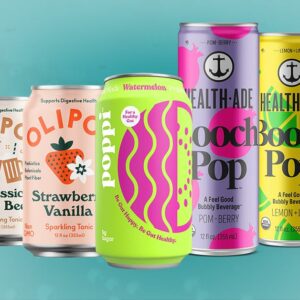Turmeric, a golden-hued spice, is a staple in many culinary traditions, especially in South Asia. However, its significance extends far beyond the kitchen. This comprehensive guide delves into the history, cultivation, medicinal properties, culinary uses, and cultural importance of turmeric.
Historical Background
Origins and Early Use
Turmeric (Curcuma longa) is native to Southeast Asia, particularly India and Indonesia. Its use dates back over 4,000 years to the Vedic culture in India, where it was utilized as a culinary spice and held a significant place in religious ceremonies. The ancient Indian medical system, Ayurveda, extensively documents the use of turmeric for its healing properties.
Spread Across the World
Turmeric’s popularity spread through trade routes to China, Africa, and the Middle East. By the 13th century, it had reached East Africa, and by the 14th century, it was known in West Africa. The spice reached Europe through the Silk Road, where it was initially used as a cheaper alternative to saffron.
Botanical Description of Turmeric
Plant Characteristics
Turmeric is a rhizomatous herbaceous perennial plant belonging to the ginger family, Zingiberaceae. The plant grows to about 3-5 feet in height and bears large, oblong leaves. The rhizomes, or underground stems, are the parts of the plant that are harvested for use.
Cultivation
Turmeric thrives in tropical climates with a temperature range of 20-30°C (68-86°F) and requires ample rainfall. It is typically grown in regions with loamy or alluvial soil. The rhizomes are planted in the spring, and the plants are harvested in the fall, about 7-10 months later when the leaves begin to yellow and wither.
Nutritional Profile of Turmeric
Active Compounds
The primary bioactive compound in turmeric is curcumin, which comprises 2-8% of most turmeric preparations. Curcumin is renowned for its potent anti-inflammatory and antioxidant properties. Turmeric also contains volatile oils, such as turmerone, atlantone, and zingiberene, which contribute to its therapeutic effects.
Vitamins and Minerals
Turmeric is a source of several essential nutrients, including:
- Vitamins: Vitamin C, Vitamin E, Vitamin K, and several B vitamins.
- Minerals: Iron, manganese, potassium, and zinc.
- Medicinal Properties
- Anti-Inflammatory Effects
Curcumin’s ability to inhibit inflammatory pathways in the body makes turmeric a powerful anti-inflammatory agent. It is often used to manage conditions such as arthritis, inflammatory bowel disease, and other chronic inflammatory conditions.
Antioxidant Benefits
Curcumin neutralizes free radicals and boosts the activity of the body’s own antioxidant enzymes. This dual action helps protect cells from oxidative damage and supports overall health.
Antimicrobial and Antifungal Properties
Turmeric exhibits antimicrobial properties against a range of bacteria, viruses, and fungi. It has been used in traditional medicine to treat infections and wounds.
Cancer Prevention and Treatment
Research suggests that curcumin may play a role in cancer prevention and treatment by affecting multiple biological pathways involved in cancer progression. Studies have shown its potential to inhibit the growth of various types of cancer cells.
Cardiovascular Health
Turmeric’s anti-inflammatory and antioxidant effects also benefit cardiovascular health. Curcumin improves endothelial function, reduces cholesterol levels, and prevents the oxidation of LDL cholesterol, which is a key factor in the development of atherosclerosis.
Cognitive Function
Emerging research indicates that curcumin may support brain health and protect against neurodegenerative diseases like Alzheimer’s. Its ability to cross the blood-brain barrier and its anti-inflammatory properties contribute to its neuroprotective effects.
- Culinary Uses
- Traditional Dishes
Turmeric is a cornerstone of many traditional dishes, particularly in Indian cuisine. It is a key ingredient in curries, giving them their distinctive yellow color and earthy flavor. It is also used in rice dishes, soups, and stews.
Turmeric in Global Cuisine
Beyond South Asia, turmeric is used in various culinary traditions:
Middle Eastern Cuisine: It is used in spice blends like za’atar and in dishes such as Persian tahdig (crispy rice).
Southeast Asian Cuisine: Turmeric is a component of Thai curry pastes and Indonesian rendang.
Western Cuisine: In recent years, turmeric has gained popularity in Western cuisine, featured in recipes for smoothies, teas, and even baked goods.
Turmeric in Beverages
Golden milk, a traditional Indian drink made with turmeric, milk, and other spices, has become popular globally for its health benefits. Turmeric tea and turmeric lattes are also enjoyed for their soothing and anti-inflammatory properties.
- Cultural and Religious Significance
- Rituals and Ceremonies
In India, turmeric holds significant cultural and religious value. It is used in Hindu rituals, wedding ceremonies, and festivals. The yellow color symbolizes prosperity and purity.
Dye and Cosmetics
Turmeric has been used as a natural dye for textiles and as a cosmetic. In traditional Indian weddings, a turmeric paste is applied to the bride and groom’s skin as part of the Haldi ceremony to purify and beautify them.
- Modern Research and Applications
- Clinical Studies
Numerous clinical studies are investigating turmeric’s potential health benefits. Research is exploring its role in managing conditions like arthritis, metabolic syndrome, and cardiovascular diseases, as well as its potential in cancer therapy.
Supplements and Extracts
Turmeric supplements, often standardized to contain a higher percentage of curcumin, are widely available. These supplements are used to achieve therapeutic doses of curcumin, which can be difficult to obtain through dietary turmeric alone.
Innovations in Delivery Methods
To enhance curcumin’s bioavailability, researchers are developing novel delivery methods such as curcumin nanoparticles, liposomal curcumin, and curcumin phospholipid complexes. These innovations aim to improve absorption and efficacy.
Potential Side Effects and Interactions
- Safety Profile: Turmeric is generally safe for most people when consumed in moderate amounts. However, high doses or prolonged use of turmeric supplements may cause gastrointestinal issues, including nausea and diarrhea.
- Drug Interactions: Curcumin can interact with certain medications, including blood thinners, antacids, and diabetes medications. It is important to consult a healthcare provider before starting turmeric supplements, especially for individuals on medication.
Environmental and Economic Impact
Sustainable Farming Practices
As the demand for turmeric grows, sustainable farming practices are essential to ensure long-term environmental health. Practices such as crop rotation, organic farming, and integrated pest management are being promoted.
Economic Importance
Turmeric cultivation is a significant source of income for farmers in India and other producing countries. The global turmeric market continues to expand, driven by increasing awareness of its health benefits and culinary uses.
Conclusion
Turmeric is much more than a spice; it is a treasure trove of medicinal properties, cultural significance, and culinary versatility. Its rich history, coupled with modern research, underscores its value in traditional and contemporary contexts. As science continues to uncover the full potential of turmeric, its role in health and wellness is likely to grow even more prominent. Whether used in cooking, as a supplement, or in rituals, turmeric remains a golden key to a healthier and more vibrant life.







